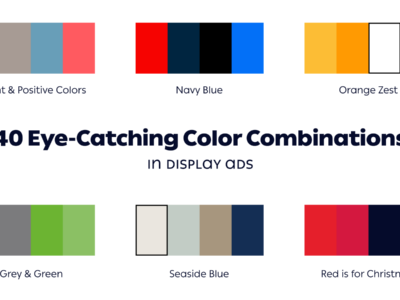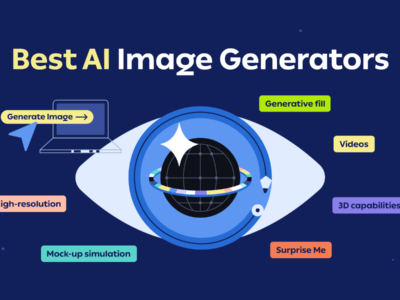Imagine wanting to say something important to someone, in a fast but captivating way. Would you do it in writing?
Maybe a decade ago, that would have been the only option. But nowadays, video is everything.
You can tell a story in a matter of seconds through video storytelling, and it will most definitely have a more significant impact than any other means of communication.
Storytelling has been around since the beginning of time, starting from cave drawings and then through books, photography, television, and video games.
The primary purpose has always been to pass down information from generation to generation along the centuries.
Video storytelling, however, came into existence only a few decades ago, with YouTube being one of its main pillars. Youtube storytelling helped marketers move on from traditional TV and send out messages to their audience and potential clients in a new way.
To better understand what exactly is video storytelling and how you can use it, we put together this guide, so keep on reading to find out.
What Is Video Storytelling?
Video storytelling is a marketing strategy that uses the power of video ad creation to tell a story about a company, product, service, or person.
There are various effects that you can use to enhance its impact, such as voiceover, music, or graphic elements.
Needless to say, it’s considered one of the top strategies in video marketing these days.
The most important thing about video storytelling is the narrative. It needs to be impactful, to elicit some sort of emotion, while also being informative.
Most importantly, it should boost the viewer’s confidence in your brand or product.
Storytelling through video usually has these four elements: purpose, place, people, and plot.
We all like a good story, especially when we can relate to the topic.
We need it to have substance, perhaps evoke some emotion. Once we associate emotion with something we’re seeing, that story will likely remain part of our memory for a more extended period.
According to a study by Science Daily, our brains best relate to characters, and that’s the main focus that all good stories should have.
People usually won’t go around telling people about an ad. But they will most likely share with others a story that stuck with them.
This is why video storytelling is so compelling because it doesn’t try to sell anything other than a story, and it can help you make your brand seem reliable and relatable to your audience.
Also, let’s face it—you’re more likely to watch a video that has a good storyline than watch a blatantly promotional video that popped in your social media newsfeed.
So why not tell people about your brand or products in a creative and entertaining manner?
There’s also no need for lengthy videos—a great story can be presented in no more than 60 seconds, which can be enough for you to convey your brand’s values and mission.
5 Powerful Video Storytelling Examples and Techniques
As you’re going to see from the examples below, storytelling through video does not have to be elaborate to have an impact.
However, the most important thing to keep in mind is that stories need people, and people must convey emotion—not necessarily through their words.
It can also be through their actions, their journeys, or their relationships.
Let’s cut to the chase and get into the actual video storytelling examples and techniques.
1. Focus on a big theme
Ask yourself this: what’s the target audience you want to reach through the video?
Depending on the answer, you can identify a theme that is relatable to this audience. The more information you have about your audience’s interests, goals, lifestyle, the easier it’s going to be to identify the theme.
Pay attention not to choose something too general—try to narrow it down a bit. One size fits all won’t work well in this case.
For example, if you sell a mobile app targeted to runners, you can try and focus the story in the video on the underdogs, inspire them to push their boundaries, and motivate them to go beyond what they believe they can achieve.
Your theme can be just that—pushing the limits to attain success.
The chances are that, even though you focused on the underdogs, most runners will be able to relate since they’ve all been in that position at some point.
Among some of the best video storytelling examples is this one from Nike.
Why it works:
Nike has long been a champion at video storytelling, and this particular campaign has all the right ingredients to guarantee success.
Its story is one about perseverance, empowering women, courage, which are prominent themes by themselves.
What’s interesting about these types of videos is that the story doesn’t even need to be told in a certain language for you to relate to it because the theme is everything.
It’s also important to point out the fact that the product is not blatantly put out there—it’s not even visible at the beginning of the video, but it builds up to it.
More than just selling you something, Nike empowers and inspires you to choose who you want to be, making this campaign a memorable one.
2. Create stories with a beginning, middle, and an end
The same as with written stories, video stories should also include a beginning, a middle part, and an ending.
Start with a hook, something intriguing, funny, mysterious, maybe—basically anything that can capture the audience’s attention.
Once you have that, move on to the plot. This is probably the most vital part of the video, where you tell the audience why your message is essential and why it should matter to them.
The main character needs to have an aim, a focus, and a way to get there. This is also where the climax happens, the moment when the protagonist overcomes a major challenge should be highlighted during this part of the video.
End it with a resolution. Show the protagonist after the conflict is resolved and make that moment inspiring, in the form of a lesson to your audience.
It should convey what they should get from that story, be it courage, optimism, or determination.
Why it works:
You don’t really know what’s going on at the beginning of the video, but you can feel that it’s building up to something.
The three parts of the video are clearly defined and visible.
In the beginning, you have the characters just answering some questions. The middle is represented by a plot when the characters are faced with a contradiction while at the end of it, we’re presented with a lesson and get some sort of closure.
Once again, there’s a big theme presented as well: empowering women and building confidence.
The audience is given a chance to rewrite the rules and change something that’s had a negative connotation to something that does and should mean something positive.
The focus is not even on the product at any time during the video, but on female empowerment.
3. Build your story around emotions
Why is it that we remember stories?
It’s because of the things that resonate with us in that particular story, things that made us feel something, be it anger, sadness, happiness, joy, or nostalgia.
We like stories when they are relatable and evoke some sort of feeling in us, which can be a memory from our childhood that we’re really fond of.
Or perhaps we identify ourselves with the protagonist, and watching them overcome obstacles empowers us to do the same.
Emotions make the world go round. We’re human, we feel, and we let ourselves be driven by feelings.
Therefore, it seems only natural to relate to something that makes us feel, such as this Gillette commercial.
Why it works:
It’s probably one of the most controversial and, at the same time, inspiring video campaigns from the past few years.
And the reason why it got so many reactions, both positive and negative, is because of what it made people feel.
Some people saw it and instantly felt either optimistic or, on the contrary, annoyed and angry.
Wherever you are in the world, you probably saw this video as well and remembered it because of the emotions you felt while watching it.
Use your story with a purpose and, above all, focus on making the audience feel something.
4. Keep it short
With time, our attention span has been narrowing.
We still enjoy listening and watching stories, but most of us don’t have the patience to watch a 10-minute video that conveys something that could have been said in four minutes.
So aim to keep your videos short but exciting.
You might think that your product needs more background and your story can’t possibly be presented in just a couple of minutes.
But try to take a step back and look from the outside.
Is it really impossible to tell it more concisely? If you were the audience, would you invest time and patience in watching this video?
Whenever you are in doubt, go ahead and put yourself into your audience’s shoes and keep in mind that your story should be captivating, above everything else, yet not go on for too long.
Get inspired by this Under Armour campaign featuring The Rock.
Why it works:
We have a big theme, a celebrity, the story is relatable, and on top of that, it can stir plenty of emotion.
But it also has something else, which can be easily disregarded.
It’s the length of the video. In just one minute, we’re being told a story of perseverance.
It could have been told in five or ten minutes, but, as previously discussed, it’s better to make it short yet powerful.
Despite being a very short video, the story is being told excellently, and it’s relatable to regular people as well, not only athletes.
Once again, there’s not a single reference that the brand’s trying to sell their products.
5. Aim to inspire
When your message is well thought out and presented creatively, perhaps even unusual, your audience will be captivated.
While it might be great to present something different, inspiring people never failed.
Work to get your story out there, but do it in a way that people can draw something out of it for themselves.
Here’s an example from Dove.
Why it works:
What Dove did here is quite remarkable, not only because of the enormous effort that was put into this campaign but also because of how they presented it.
And they were pretty creative about how they implemented it.
They don’t tell the brand’s story but put the characters in front of a camera and make them tell their story.
While most of Dove’s campaigns until now have been focused on women and their struggles, this time, they changed it up a bit and chose to tell a man’s story.
This strategy can make your brand more human because the focus is on the company’s values and not the products themselves.
Final Thoughts
Video storytelling is more than just filming something and putting it online.
It requires and well-crafted strategy that goes hand in hand with the brand’s values and mission.
Storytelling focuses on glimpses of life, and it can portray anything from life experiences to ordinary, everyday actions, fears, desires, humor, and the list can go on and on.
In the end, it’s not about selling something but about being memorable. So make sure you focus your video campaign on the right thing that aligns with your brand’s value proposition.









